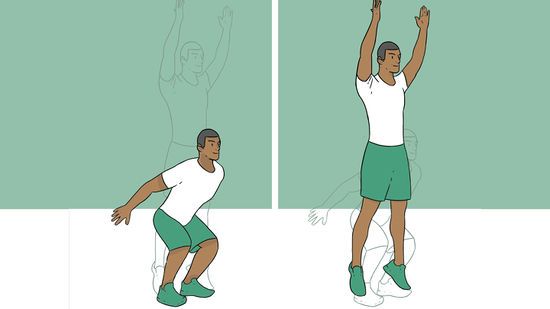How to Increase Vertical Jump for Basketball
Basketball is a game of speed, agility, and height. One of the key elements that can elevate a player’s performance is the ability to jump high. Whether it’s for a powerful dunk, a crucial rebound, or an effective block, a strong vertical jump is essential. But how can you improve your vertical jump? This article will provide a comprehensive guide on how to increase your vertical jump for basketball, covering everything from strength training to mental conditioning.
Understanding Vertical Jump
To improve your vertical jump, it’s crucial to understand what it entails. A vertical jump is the act of propelling your body upward from a standing position using the force generated by your legs. It combines strength, speed, and technique. The main components of a vertical jump are:
- Leg Strength: The power generated from your legs.
- Core Stability: The ability to maintain balance and control.
- Technique: The method of jumping, which includes the arm swing and the timing of the jump.
Also, read about Tallest NBA Player in the History
Assessing Your Current Vertical Jump
Before you begin working on improving your vertical jump, you need to know your starting point. Here’s how you can measure it:
- Stand next to a wall and reach as high as you can with one hand, marking the highest point you can reach.
- Without moving your feet, jump and touch the highest point on the wall, marking this spot as well.
- Measure the distance between the two marks – this is your vertical jump height.
Set realistic goals based on your current performance. Gradual improvement is key, aiming for incremental increases rather than drastic jumps.
Strength Training for Vertical Jump
Building lower body strength is fundamental to increasing your vertical jump. Focus on exercises that target your legs and glutes, such as:
- Squats: Enhance your quadriceps, hamstrings, and glutes.
- Deadlifts: Strengthen your lower back, glutes, and hamstrings.
- Lunges: Improve your quadriceps, hamstrings, and balance.
Incorporate these exercises into your routine 2-3 times a week, gradually increasing the weight and intensity.
Plyometric Training
Plyometric exercises are explosive movements that increase power and speed. These exercises are essential for enhancing your vertical leap. Some of the best plyometric exercises include:
- Box Jumps: Jump onto a sturdy box, focusing on a soft landing.
- Depth Jumps: Step off a box and jump immediately after landing.
- Bounding: Perform exaggerated running steps to improve power and speed.
Perform plyometric exercises 2-3 times a week, ensuring you have proper form to prevent injury.

Core Strengthening
A strong core stabilizes your body during a jump, providing a solid foundation for your legs to push off from. Effective core exercises include:
- Planks: Hold a plank position, keeping your body straight and engaging your core.
- Russian Twists: Sit on the floor, lean back slightly, and twist your torso from side to side.
- Leg Raises: Lie on your back and lift your legs, keeping them straight.
Include core exercises in your workout routine at least 3 times a week. Discover more about How to Improve Basketball Shooting Accuracy
Flexibility and Mobility
Flexibility and mobility play a significant role in your ability to jump high. Flexible muscles can stretch further and generate more force. Incorporate both dynamic and static stretching into your routine:
- Dynamic Stretching: Perform leg swings, high knees, and butt kicks before workouts.
- Static Stretching: Stretch your hamstrings, quadriceps, and calves after workouts, holding each stretch for 20-30 seconds.
Technique Improvement
Even with strength and power, your jumping technique can significantly impact your vertical jump. Key aspects of proper technique include:
- Arm Swing: Use your arms to generate upward momentum.
- Knee Bend: Bend your knees to a 90-degree angle before jumping.
- Explosive Push: Push off the ground forcefully using the balls of your feet.
Avoid common mistakes such as not bending your knees enough or not using your arms effectively.
Nutrition for Enhanced Performance
What you eat affects your performance on the court. A balanced diet provides the energy and nutrients needed for muscle growth and recovery. Focus on:
- Protein: For muscle repair and growth – include lean meats, eggs, and legumes.
- Carbohydrates: For energy – opt for whole grains, fruits, and vegetables.
- Healthy Fats: For sustained energy – include nuts, seeds, and avocados.
Stay hydrated and consider consulting a nutritionist for a personalized plan.
Rest and Recovery
Muscles grow and repair during rest, making recovery a critical component of your training. Ensure you get:
- Adequate Sleep: Aim for 7-9 hours per night.
- Rest Days: Incorporate rest days into your training schedule to prevent overtraining.
- Active Recovery: Engage in low-intensity activities like walking or swimming on rest days.
Using Vertical Jump Equipment
Specialized equipment can enhance your training by adding resistance and variety. Consider using:
- Jump Ropes: Improve your cardiovascular endurance and coordination.
- Resistance Bands: Add resistance to your exercises, increasing strength.
- Jump Trainers: Devices that provide resistance to your jumping movements.
Incorporate these tools to challenge your muscles in new ways.
Tracking Progress
Monitoring your progress keeps you motivated and helps adjust your training plan. Track your vertical jump height monthly and note improvements. Use a journal or an app to record:
- Measurements: Vertical jump height, weight, and strength levels.
- Workouts: Exercises performed, sets, and reps.
- Recovery: Sleep patterns, rest days, and injuries.
Adjust your training based on your progress to continue improving.

Mental Conditioning
The mental aspect of training is often overlooked but crucial for peak performance. Techniques for mental conditioning include:
- Visualization: Imagine yourself performing successful jumps.
- Positive Affirmations: Use positive self-talk to boost confidence.
- Focus Techniques: Practice mindfulness to improve concentration.
Mental conditioning helps you stay focused and confident during games and training.
Consistency and Patience
Improving your vertical jump takes time and dedication. Stay consistent with your training and be patient with your progress. Here are some tips to stay motivated:
- Set Short-Term Goals: Break down your ultimate goal into smaller, achievable milestones.
- Reward Yourself: Celebrate your successes, no matter how small.
- Stay Positive: Focus on progress rather than perfection.
Conclusion
Increasing your vertical jump for basketball is a multifaceted process that involves strength training, plyometrics, core strengthening, flexibility, proper technique, nutrition, rest, and mental conditioning. By following the guidelines outlined in this article, you can make significant improvements in your vertical leap and enhance your overall basketball performance. Remember, consistency and patience are key – stay committed to your training, and you’ll see results.
FAQs
How long does it take to see improvements in my vertical jump?
It varies for each individual, but with consistent training, you may start to see improvements within 4-6 weeks.
Can I improve my vertical jump without going to the gym?
Yes, you can perform bodyweight exercises and plyometrics at home. However, access to gym equipment can enhance your training.
Is it safe to do plyometrics every day?
No, plyometric exercises are intense and can lead to injury if overdone. It’s best to perform them 2-3 times a week with adequate rest.
Do I need a specific diet to improve my vertical jump?
A balanced diet rich in protein, carbohydrates, and healthy fats can support muscle growth and recovery, enhancing your vertical jump.
Can older adults improve their vertical jump?
Yes, with proper training and conditioning, older adults can improve their vertical jump. However, they should consult with a healthcare professional before starting a new workout regimen.
Alina is a passionate basketball player with a love for the game that knows no bounds. With years of experience on the court, she brings unmatched skill and dedication to her team. Alina’s commitment to excellence both on and off the court sets her apart as a leader and motivator. Whether she’s driving to the basket or encouraging her teammates, Alina’s enthusiasm and sportsmanship shine through. As a valuable member of the basketball team, Alina’s presence elevates the spirit and performance of the entire squad.







